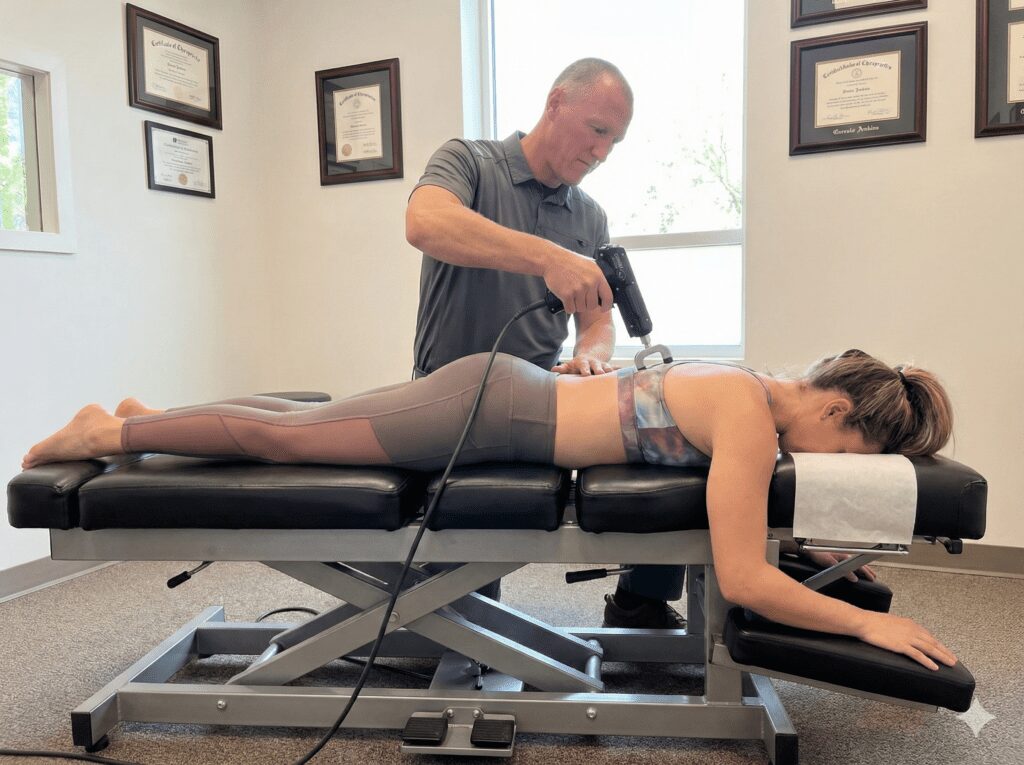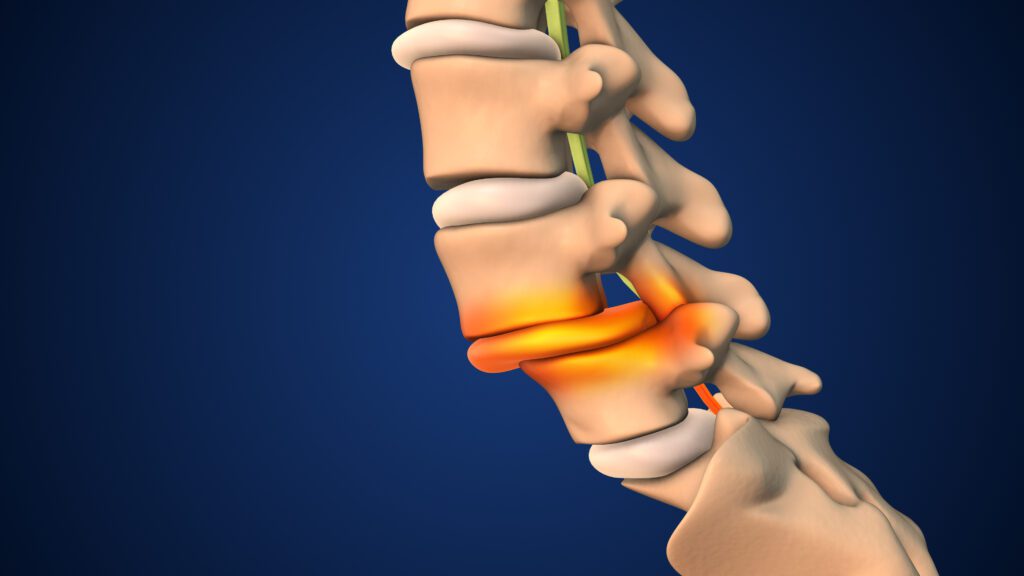Fibromyalgia is one of the most misunderstood and frustrating conditions in modern healthcare.
Millions of people—mostly women—live with widespread pain, relentless fatigue, sleep disturbances, and cognitive issues often referred to as “fibro fog.”
Yet despite decades of research, many patients feel dismissed, shuffled between doctors, and left with only symptom-masking medications.
But there’s good news. Emerging research—including a fascinating new study published in Scientific Reports (DOI: 10.1038/s41598-025-05390-6)—is revealing how fibromyalgia is deeply connected to changes in the brain and nervous system.
Even more compelling, modern chiropractic techniques—especially Chiropractic BioPhysics® (CBP®) and today’s corrective chiropractic care—are showing promise in addressing the neurological dysfunctions at the root of fibromyalgia symptoms.
If you’re searching for answers in Kelowna, or anywhere else, and you’re tired of merely “managing” fibromyalgia, read on. This could transform how you see your health, your brain, and your future.
The New Study: Fibromyalgia and the Brain’s Pain Maps
Earlier this year, a team of researchers published a pivotal paper in Scientific Reports (Zhou et al., 2025). They examined brain connectivity changes in fibromyalgia patients, revealing:
“Significant alterations in functional connectivity within pain-processing networks, especially between the insula, prefrontal cortex, and sensorimotor regions.”
In plain language:
- The brains of fibromyalgia patients light up differently than those without chronic pain.
- Pain-processing regions are hyperactive, even in the absence of tissue injury.
- This suggests fibromyalgia isn’t merely a “muscle problem”—it’s a central nervous system disorder.
This aligns perfectly with years of research from Dr. Heidi Haavik—a chiropractic neuroscientist whose work has revolutionized how we understand spinal health and the brain.
Heidi Haavik’s Work: The Spine-Brain Connection in Chronic Pain
Dr. Haavik’s groundbreaking studies have shown that spinal dysfunction alters the brain’s processing of sensory information.
In fibromyalgia, this is crucial because:
- Chronic pain changes how the brain perceives normal touch, movement, and pressure.
- Brain scans show enhanced sensitivity and reduced ability to “turn down” pain signals.
- Even normal movement becomes threatening to the brain, reinforcing chronic pain loops.
In her book The Reality Check, Dr. Haavik explains:
“When spinal joints aren’t moving properly, it distorts the feedback your brain receives about your body’s position and movement. Over time, this altered feedback can contribute to pain becoming centralized in the brain.”
This “central sensitization” is a key feature of fibromyalgia.
So, while fibromyalgia sufferers might hear “it’s all in your head,” the truth is:
- It is in the brain—but not imaginary.
- It’s a neuroplastic change driven partly by how the spine and nervous system communicate.
The Role of Forward Head Posture and Spinal Alignment
One factor that significantly impacts brain function in fibromyalgia patients is posture.
CBP® researchers, including Dr. Don Harrison, have published extensive studies showing:
- Forward head posture dramatically increases mechanical strain on the spinal cord and nerve roots.
- Abnormal spinal curves increase tension on the meninges (the protective layers around the brain and spinal cord).
- Altered spinal alignment contributes to chronic muscle tension, reduced blood flow, and inflammation.
A 2009 study in Spine Journal found that patients with forward head posture reported:
- Increased neck and shoulder pain
- Greater incidence of headaches
- Higher stress levels
- Lower quality of life
These biomechanical stresses feed directly into the brain’s pain-processing systems, reinforcing chronic pain states like fibromyalgia.
What Chiropractic BioPhysics® Brings to Fibromyalgia Care
Unlike traditional chiropractic—which often focuses solely on spinal manipulation—Chiropractic BioPhysics® (CBP®) is dedicated to:
- Restoring spinal alignment toward normal curves and posture.
- Reducing stress on nerves, spinal cord, and the brain.
- Improving how the brain processes sensory and pain signals.
CBP® techniques include:
- Precise digital X-ray analysis to map your spinal curves
- Mirror-image adjustments designed to correct misalignments
- Neurological testing for balance, proprioception, and nerve function
- In-office traction to reshape spinal structures gradually
CBP Non-Profit has published hundreds of studies demonstrating that correcting spinal alignment leads to significant reductions in pain, disability, and neurological stress.
For fibromyalgia patients, this approach offers hope not just for temporary relief—but for retraining the nervous system to function normally again.
Research Supporting Chiropractic and Fibromyalgia
Let’s look at what broader chiropractic research says about fibromyalgia relief:
1. Improved Pain Thresholds
A study in Journal of Manipulative and Physiological Therapeutics (JMPT, 2009) showed spinal adjustments raised pain thresholds in chronic pain patients. This suggests:
- Adjustments may reduce central sensitization.
- Patients tolerate pressure and movement better.
- There’s less exaggerated pain response to normal activities.
2. Enhanced Brain Function
Dr. Haavik’s research demonstrates that spinal adjustments:
- Improve prefrontal cortex activity, the brain region responsible for pain modulation and emotional processing.
- Normalize how the brain maps body movement and touch.
This is critical in fibromyalgia, where patients often report “fibro fog” and poor mental clarity. Proper spinal function appears to clear the brain’s signals, helping reduce confusion and fatigue.
3. Reduced Muscle Tension
Chiropractic adjustments help:
- Normalize muscle tone
- Reduce spasms
- Improve circulation to affected tissues
Many fibromyalgia patients describe feeling like their muscles are “tight and knotted all the time.” CBP® protocols help restore normal muscle firing patterns and tension balance.
4. Improved Autonomic Nervous System Function
The autonomic nervous system (ANS) controls involuntary functions like heart rate, digestion, and immune response. Fibromyalgia patients often have dysregulated ANS activity, leading to:
- Poor sleep
- Digestive issues
- Chronic fatigue
Research shows spinal adjustments may improve heart rate variability (HRV)—a key marker of healthy autonomic balance. CBP® corrections reduce sympathetic nervous system overdrive, helping patients shift out of chronic “fight-or-flight” mode.
A Real Patient Story from Our 100+Living Centres
Let me share a true story from our clinic in Kelowna.
A patient named Michelle came to the 100+Living Health Centre after struggling for over 10 years with fibromyalgia. She described:
- Waking up exhausted every day
- Constant body-wide pain
- Brain fog so thick she couldn’t finish sentences
Michelle had tried medications, physical therapy, and countless specialists with minimal help. When we examined her:
- She had severe forward head posture
- A flattened cervical curve
- Significant spinal restrictions affecting nerve function
We designed a personalized CBP® plan, including mirror-image adjustments, posture-specific exercises, and gentle traction. Over several months:
- Michelle reported decreased pain intensity
- Her sleep quality improved
- The “fog” began to lift, and she felt sharper and more hopeful
She told me:
“For the first time in years, I feel like I’m getting my life back. I wish I’d known sooner that my spine and posture were affecting my fibromyalgia.”
Stories like Michelle’s remind us that fibromyalgia is not a dead-end diagnosis. There’s always potential for improvement when we address the nervous system at its root.
Fibromyalgia, Chiropractic, and Hope for the Future
Modern science is clear:
- Fibromyalgia is not “all in your head”—it’s a complex neurological disorder involving the brain’s pain-processing networks.
- Spinal dysfunction and poor posture can exacerbate or even trigger chronic pain pathways.
- Correcting spinal alignment helps normalize how the brain perceives pain, offering a real path to relief.
If you’re searching for a Kelowna chiropractor specializing in Chiropractic BioPhysics, corrective chiropractic, and fibromyalgia care, the 100+Living Health Centres are here to help. We are the only advanced certified CBP® office in the BC interior, and our mission is to help people:
- Regain control of their health
- Restore function and quality of life
- Live strong, vibrant, and pain-free for 100+ years
Don’t Wait Until It Gets Worse
If you’ve been told there’s nothing you can do for fibromyalgia except manage symptoms, I encourage you to reconsider.
Your brain can change. Your nervous system can heal. Your body can feel better.
But waiting often leads to deeper neurological patterns that are harder to unwind.
If you’re struggling with fibromyalgia—or know someone who is—don’t wait.
Book a comprehensive spinal and neurological assessment at our clinic. Let’s identify the root cause of your pain and craft a personalized plan to help you reclaim your health.
At 100+Living Health Centres, we help people every day rediscover life beyond chronic pain. We’d love to help you, too.
References:
- Zhou et al. (2025). Altered brain connectivity in fibromyalgia patients. Scientific Reports. DOI: 10.1038/s41598-025-05390-6
- Haavik, H. (2014). The Reality Check: A quest to understand chiropractic from the inside out. Haavik Research
- Harrison, D. E., et al. (2005-2022). CBP Non-Profit research publications. JMPT, Spine, European Spine Journal
- Coppieters, M. W., & Butler, D. S. (2005). Nerve biomechanics in chronic pain. J Orthop Sports Phys Ther
- JMPT (2009). Effects of spinal adjustments on pain thresholds in chronic pain populations.









